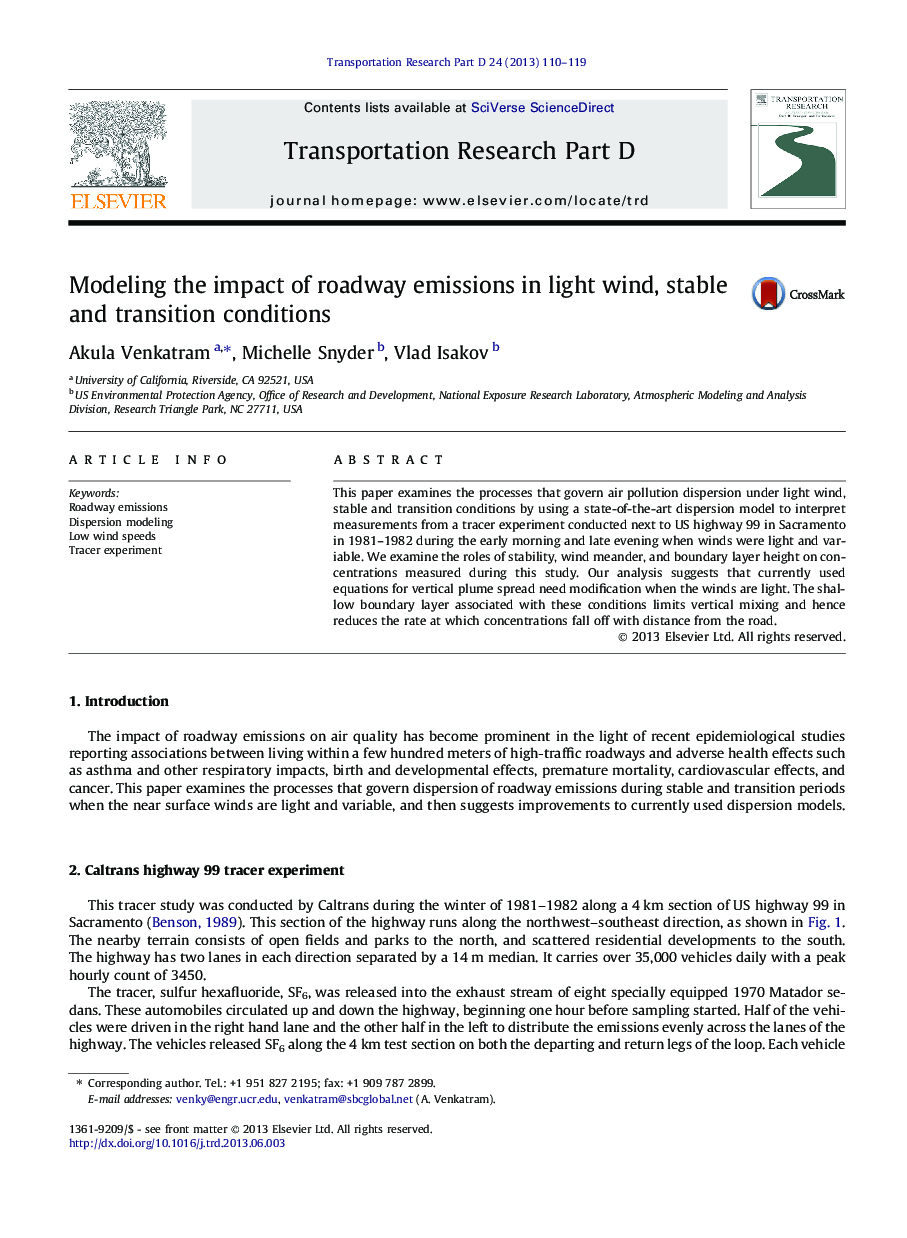| کد مقاله | کد نشریه | سال انتشار | مقاله انگلیسی | نسخه تمام متن |
|---|---|---|---|---|
| 1065797 | 1485899 | 2013 | 10 صفحه PDF | دانلود رایگان |

• The dispersion model accounts for parallel winds and wind meander on roads.
• Boundary layer height limits vertical mixing under stable, transition conditions.
• Vertical plume spread needs to be modified under light wind conditions.
This paper examines the processes that govern air pollution dispersion under light wind, stable and transition conditions by using a state-of-the-art dispersion model to interpret measurements from a tracer experiment conducted next to US highway 99 in Sacramento in 1981–1982 during the early morning and late evening when winds were light and variable. We examine the roles of stability, wind meander, and boundary layer height on concentrations measured during this study. Our analysis suggests that currently used equations for vertical plume spread need modification when the winds are light. The shallow boundary layer associated with these conditions limits vertical mixing and hence reduces the rate at which concentrations fall off with distance from the road.
Journal: Transportation Research Part D: Transport and Environment - Volume 24, October 2013, Pages 110–119